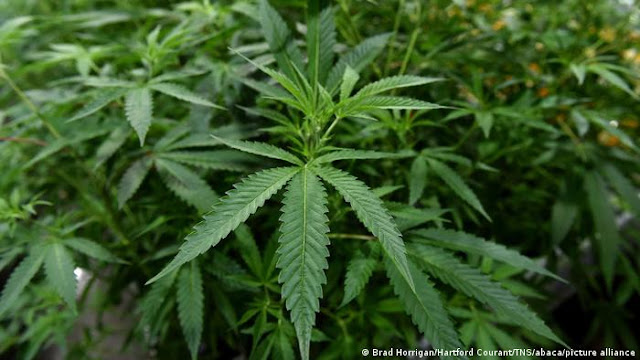What are drugs?
Drugs affect your mind and body
Drugs are substances that change a person’s mental or physical state. They can affect the way your brain works, how you feel and behave, your understanding and your senses. This makes them unpredictable and dangerous, especially for young people.
The effects of drugs are different for each person and drug. Learn more about the effects of drugs and the different types of drugs.
Why do people use drugs?
Drugs change the way your body or brain works.
People take drugs because:
- they are curious and want to see what happens
- they want to fit in or feel pressured by their peers
- they enjoy the effect on their body — for example, feeling excited and energetic, or relaxed and calm
- they help them cope with situations — for example, reducing pain or relieving stress
- they’ve have a drug dependency and need to keep taking them to avoid withdrawal symptoms.
How are drugs made?
Drugs come from different sources:
- plants – for example, cannabis, mushrooms, or tobacco
- processed plant products – for example, alcohol, or heroin
- synthetic chemicals – for example, ecstasy or amphetamines.
The processes used to make drugs varies widely, but drug products have 2 main types of ingredients:
- active ingredients – the ingredients that biologically affect your body
- inactive ingredients – these generally have no biological effect. They include binding agents, capsules, dyes, preservatives, flavorings and other ingredients.
Legally manufactured drugs usually list all their ingredients, so you know what you are taking. Street drugs can contain almost anything as makers often add impurities to make them go further. You cannot be sure what you are taking.
How do people take drugs?
People take drugs in different ways. Common methods include:
- swallowing tablets or drinking liquids – the body absorbs the drug through the stomach lining
- breathing them into the lungs – the body absorbs the drug through the lining of the lungs
- snorting into the nose – the body absorbs the drug through the thin nasal lining
- injecting – the user injects the drug directly into the bloodstream
- through the skin – the body slowly absorbs the drug from a cream or patch
- rectally or vaginally as a suppository – the body absorbs the drug through the bowel or vaginal lining.
No matter which way you take a drug, it will end up in your bloodstream and affect different parts of your body.
Legal and illegal drugs
Drugs can be:
- legal – for example, alcohol, caffeine, and tobacco
- illegal – for example, cocaine or heroin.
Legal drugs
Some drugs – such as alcohol, caffeine, and nicotine – are legal but may be subject to restrictions based on age, location of use, driving and point of sale regulations.
We regulate and control the active ingredients in legal drugs:
- the alcohol content of drinks
- the milligrams of nicotine in cigarettes.
Illegal drugs
Other drugs such as cannabis, amphetamines, ecstasy, cocaine and heroin, are illegal. They are not subject to quality or price controls and the amount of active ingredient varies. A person using illegal drugs can never be sure of how strong the drug is, or what is actually in it.
Different batches of an illegally manufactured drug may have different amounts of the drug and other unidentified additives.
It is against the law to possess, use, make, import or sell illegal drugs. The penalties for drug offences vary depending on the age of the offender (adult or minor), type of drug, quantities involved, previous offences, and the state or territory in which the offence happened.
Illicit drugs
Illicit drugs include:
- illegal drugs
- prescription medicines that have been obtained illegally or are not being used for medicinal purposes
- other substances that are being used inappropriately – for example, sniffing glue or inhaling paint thinner.
Types of drugs
Drugs can be grouped together in different ways – by the way they affect the body, how they are used or where they are used. Find out which drugs we are focused on reducing in Australia.
Drug categories
Drugs can be categorized by the way in which they affect our bodies:
- depressants – slow down the function of the central nervous system
- hallucinogens – affect your senses and change the way you see, hear, taste, smell or feel things
- stimulants – speed up the function of the central nervous system.
Some drugs affect the body in many ways and can fall into more than one category. For example, cannabis appears in all 3 categories.
Depressants
Depressants slow down the messages between the brain and the body — they don’t necessarily make you feel depressed. The slower messages affect:
- your concentration and coordination
- your ability to respond to what’s happening around you.
Small doses of depressants can make you feel relaxed, calm and less inhibited.
Larger doses can cause sleepiness, vomiting and nausea, unconsciousness and even death.
Examples include:
- alcohol
- benzodiazepines (minor tranquillizers such as Valium)
- cannabis
- GHB (gamma-hydroxybutyrate)
- ketamine
- opioids (heroin, morphine, codeine).
Hallucinogens
Hallucinogens change your sense of reality – you can have hallucinations. Your senses are distorted and the way you see, hear, taste, smell or feel things is different. For example, you may see or hear things that are not really there, or you may have unusual thoughts or feelings.
Small doses can cause a feeling of floating, numbness, confusion, disorientation, or dizziness.
Larger doses may cause hallucinations, memory loss, distress, anxiety, increased heart rate, paranoia, panic and aggression.
Examples include:
- cannabis
- ketamine
- LSD (lysergic acid diethylamide)
- psilocybin (magic mushrooms)
- PCP (phencyclidine).
Stimulants
Stimulants speed up the messages between the brain and the body. This can cause:
- your heart to beat faster
- your blood pressure to go up
- your body temperature to go up – leading to heat exhaustion or even heat stroke
- reduced appetite
- agitation
- sleeplessness.
You can feel more awake, alert, confident or energetic.
Larger doses can cause anxiety, panic, seizures, stomach cramps and paranoia.
Examples include:
- amphetamines (speed and ice)
- caffeine
- cocaine
- ecstasy (MDMA – methylenedioxymethamphetamine)
- nicotine (tobacco).
Common groups of drugs
Drugs can also be grouped by how or where they are commonly used.
Analgesics
Analgesics – or painkillers – relieve the symptoms of pain. Some people take more than the recommended dose to get high, or to self-harm. They can also be overused by people who have chronic pain.
Some are available over the counter, such as:
Others require a prescription from a doctor, such as:
Inhalants
Inhalants are substances that you breathe in through the nose (sniffing) or mouth. They are absorbed into the bloodstream very quickly, giving the user an immediate high.
There are 4 main types of inhalants:
- volatile solvents – liquids that turn into a gas at room temperatures — for example, paint thinners and removers, glues, petrol and correction fluid (liquid paper)
- aerosol sprays – for example, spray paints, deodorants and hairsprays, fly sprays and vegetable oil sprays
- gases – for example, nitrous oxide (laughing gas), propane, butane (cigarette lighters), helium
- nitrites – for example, room deodorisers and leather cleaners.
Most of these are depressants, except for nitrites.
Opioids
Opioids are a type of painkiller that can be made from poppy plants (heroin) or produced synthetically (fentanyl). Also called opiates or narcotics, they are addictive as they can give you a feeling of wellbeing or euphoria.
Examples include:
Party drugs
Party drugs are a group of stimulants and hallucinogens. They are often used by young people in an attempt to enhance a party, festival or concert experience. However, dozens of Australians become seriously ill or die after using party drugs each year.
The most common party drug is ecstasy (MDMA), but the pills/tablets/capsules are of variable purity or don’t actually contain any MDMA and may contain a wide range of other substances. You cannot be sure what you’re taking and the risks to your health are high.
Performance and image enhancing drugs
Performance and image enhancing drugs are substances used by people to change their physical appearance or boost their sporting ability, for example, weightlifters and athletes.
There are 3 main types of performance and image enhancing drugs:
- anabolic steroids – synthetic hormones that help grow and repair muscles
- peptides – stimulate the release of human growth hormone, which is involved in muscle and bone growth
- hormones – both natural and artificial – for example, growth hormones, selective androgen receptor modules, insulin-like growth factors, mechano growth factor.
Read more about perfomance and image enhancing drugs.
Prescription drugs
Medicines prescribed by a doctor – also known as pharmaceuticals – that are not being used appropriately can cause harm, both short and long-term. People assume that all prescribed medicines are safe, but not following instructions or combining them with other medicines, drugs and/or alcohol can be dangerous.
Did you know?
Drug-related deaths from prescribed drugs are more common than those for illegal drugs.
Examples include:
- painkillers – codeine, oxycodone
- sedatives and sleeping pills – benzodiazepines.
Psychoactive drugs
Psychoactive drugs affect the way you think, feel and behave. They act mainly on the central nervous system, changing brain functions and temporarily changing your consciousness.
Examples include:
- caffeine
- cannabis
- psilocybin (magic mushrooms)
- LSD.
Synthetic drugs
Synthetics drugs are a range of drugs that have been developed to create similar effects to banned drugs. These new psychoactive substances are being developed quickly, trying to stay ahead of the law. They are also called ‘legal highs’, although in most cases they are not legal.
Because they are not regulated or tested and change constantly there is not a lot of information about their effects and side-effects. You cannot be sure what you are taking or how it will affect you.
Examples include:
- synthetic cannabis
- NBOMe (N-methoxybenzyl) – similar effects to LSD.
Our priorities
Our National Drug Strategy identifies a number of drug types that cause the most harm in Australia. These include:
- alcohol
- tobacco
- cannabis
- methamphetamines (e.g. MDMA) and other stimulants such as cocaine
- new psychoactive substances – synthetic drugs
- opioids, including heroin
- the non-medical use of prescription drugs.
Is taking drugs ever safe?
Using drugs is never completely safe – even prescription drugs have risks if not used properly. Find out how to reduce your risk, use medicines safely and avoid misuse. Incorrect use of drugs can seriously affect your health, even result in death.
Are prescription drugs safe?
Some drugs are relatively safe – but you still need to take care as people can react differently to the same medicine. Mixing prescription drugs and alcohol can also be unsafe.
Over-the-counter drugs (for example, cold and flu tablets) and those prescribed by a doctor are usually safe – when taken according to the instructions.
Make sure you understand:
- what you are taking and how it will help you
- how and when you should take the medicine
- the best way to store the medicine
- what side effects are possible and how to manage them
- how it is affected by any other medicine you take
- the impact of taking it long-term.
Learn more about safe medication use on Victoria’s Better Health website.
Remember
Never take someone else’s prescription drugs or share yours with someone else.
Misusing prescription drugs
Taking prescribed drugs for a non-prescribed purpose can have serious consequences to your health and wellbeing. These include:
- memory loss
- anxiety and depression
- drowsiness – this makes operating heavy machinery or driving a car unsafe
- paranoia
- being irritable or aggressive – you could become violent towards others
- developing skin rashes
- weight gain
- fertility issues
- becoming dependent on the drug
- overdosing
- death – especially when combined with other drugs, such as alcohol.
Did you know?
Possessing or using prescription drugs without a prescription is illegal.
If you have questions or concerns about a medicine you’ve been prescribed you can:
- ask your doctor
- talk to a pharmacist
- call the hotline below for advice and support.























0 Comments
Thank you for being here.. Tell us what you think.